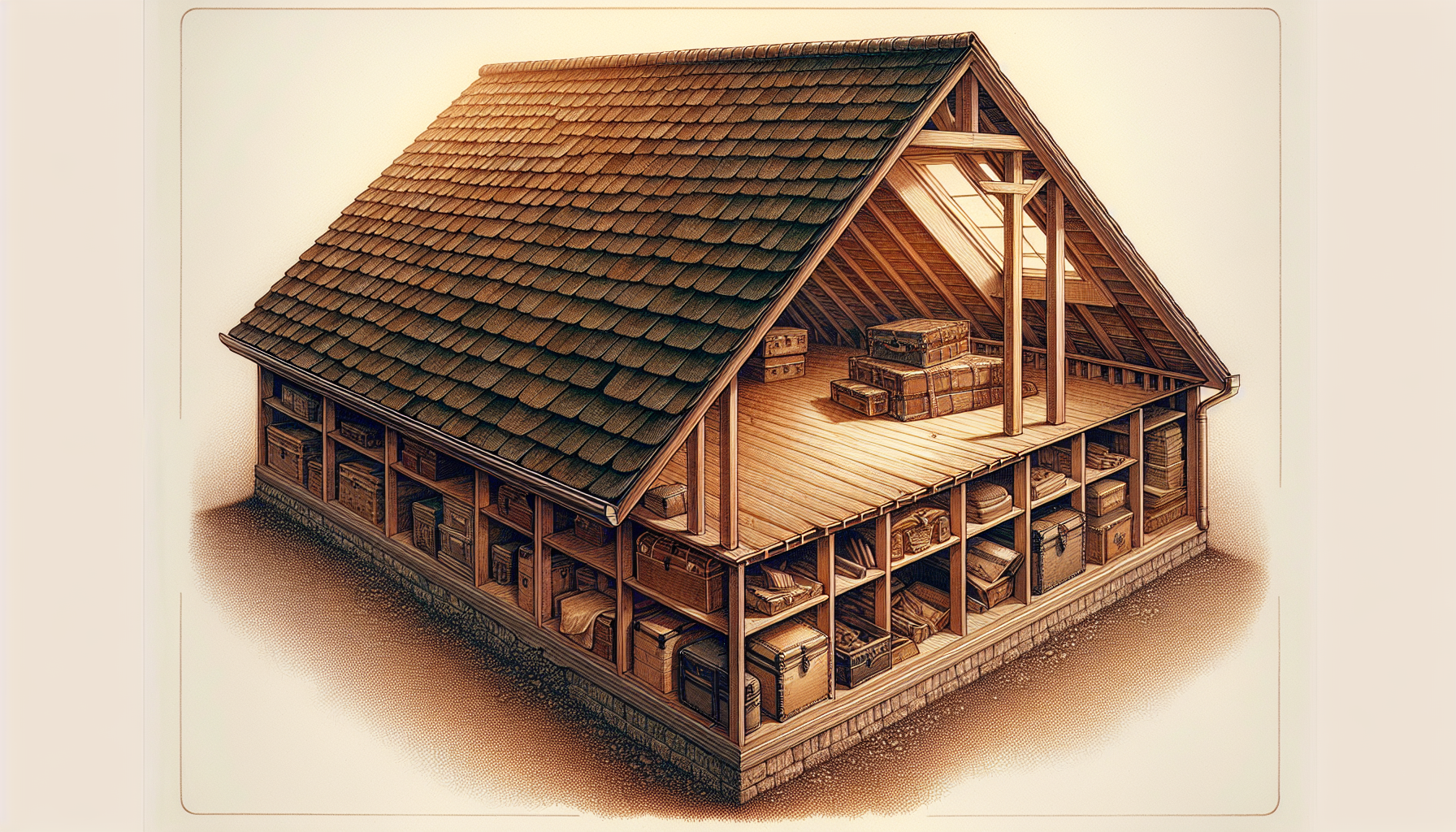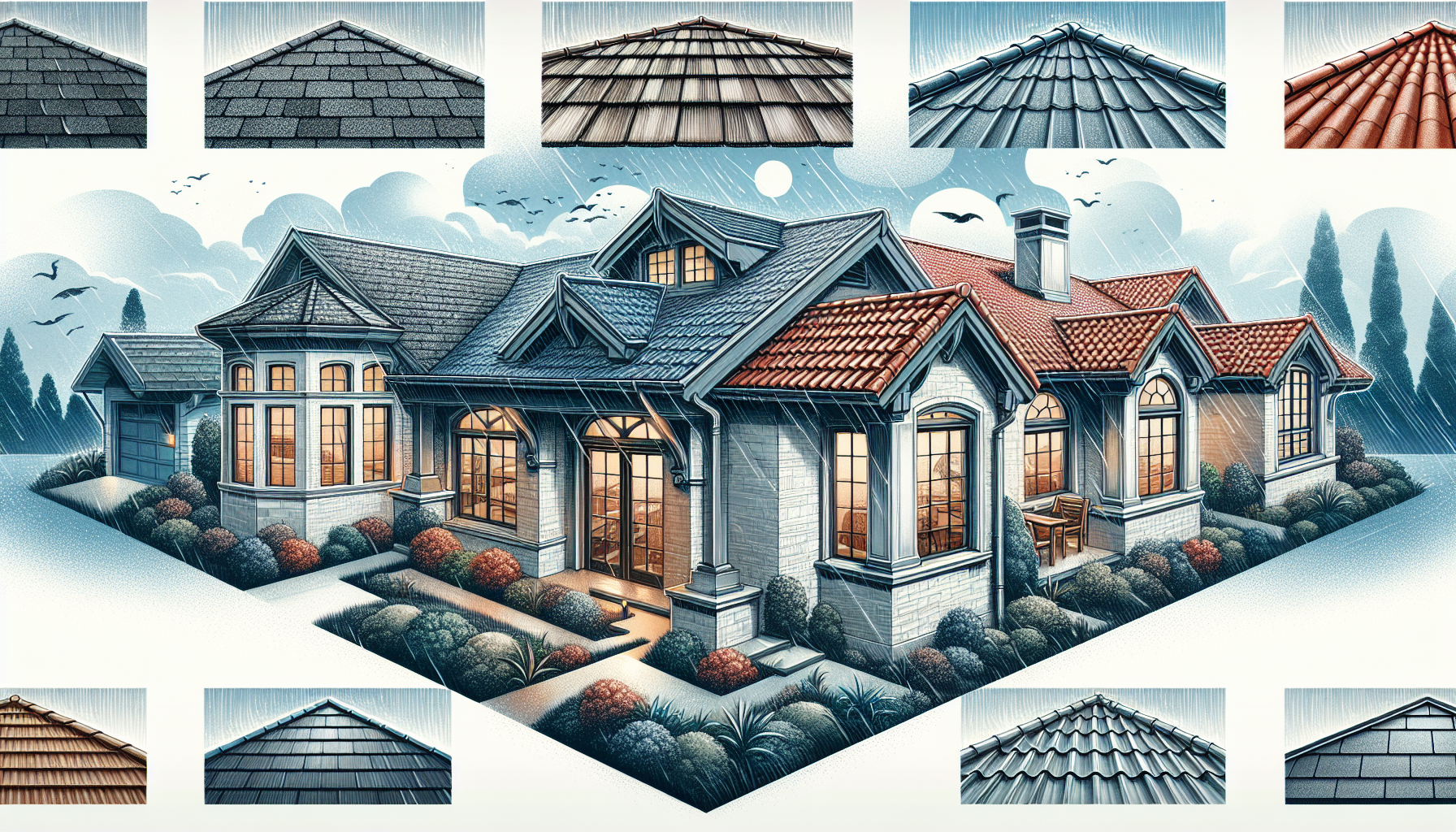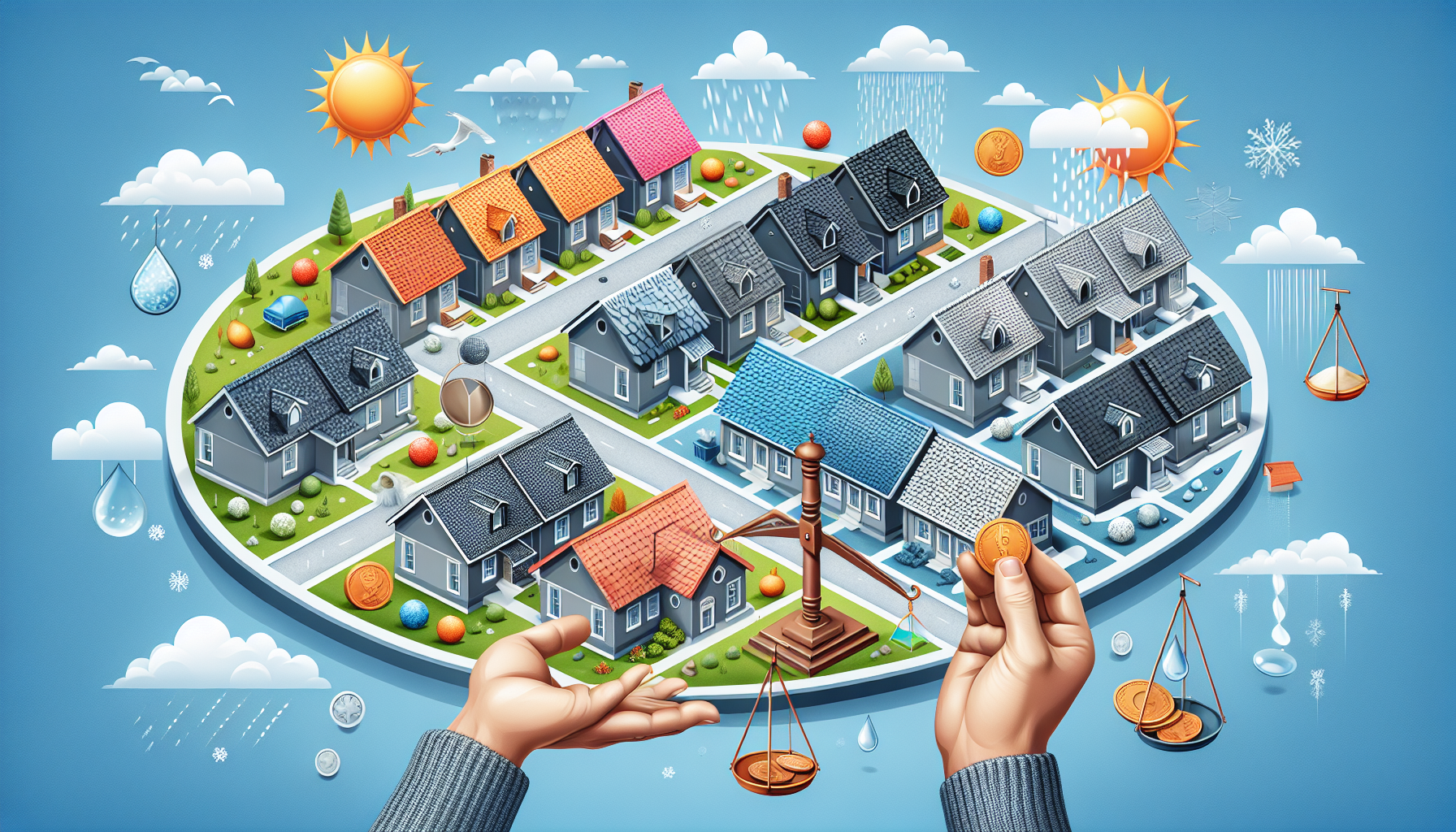Residential roofing is the art and science of designing and installing the roof of a home, distinct from its commercial counterpart in both form and function. It isn’t just a shelter over your head; it’s a complex system involving a variety of materials and construction techniques aimed at protecting your living space from the elements, enhancing insulation, and boosting the curb appeal of your property. Dive into our comprehensive guide for an in-depth understanding of what residential roofing is, its essential components, popular materials, and maintenance tips.
Key Takeaways
-
Residential roofing is designed with a higher and steeper slope, using materials like asphalt shingles to provide protection and enhance the aesthetics of homes, differentiating it from commercial roofing which uses different materials and designs for larger, lower-sloped buildings.
-
A residential roofing system comprises various components such as rafters, trusses, decking, underlayment, and ventilation, each serving a crucial role in support, insulation, water damage prevention, and temperature regulation, contributing to the system’s longevity and energy efficiency.
-
The choice of residential roofing materials, such as asphalt shingles, tile roofing, or wood shakes, requires consideration of factors like cost, durability, climate suitability, and maintenance needs, with regular roof inspections and prompt damage repairs being essential for prolonging the roof’s lifespan.
Defining Residential Roofing: A Closer Look

The domain of residential roofing stands distinctly apart, crafted specifically to meet the needs of homes. In contrast to commercial roofs designed for sprawling structures with minimal slope, residential systems are engineered with a greater and more pronounced slope that not only ensures efficient water drainage but also facilitates attic space creation. These dual functions imbue residential rooftops with both utilitarian value and aesthetic appeal, marking them as vital components of any dwelling.
At first glance, one might perceive a few differences between commercial and residential tops. Upon closer inspection, significant distinctions become evident. The divergence primarily lies in the materials selected: metal roofing or built-up systems frequently cover commercial buildings while asphalt shingles reign as the predominant choice for domestic abodes—a testament to their widespread popularity in this setting.
Purpose of Residential Roofs
What is the role of a residential roof? Fundamentally, it serves to:
-
Shield the residence against environmental factors like water and moisture
-
Boost the home’s energy efficiency
-
Add an additional insulating layer with underlayment, which aids in keeping indoor temperatures stable regardless of seasonal changes.
There’s more to residential roofs than mere utility. They also play a vital role in improving the home’s aesthetic value and enhancing its curb appeal. The choice of roofing material – be it asphalt shingles, metal roofs, or tile roofs – can drastically influence how residential structures look. Available in an array of colors and designs, these materials allow homeowners to tailor their roof’s appearance to match their unique taste as well as correspond with their dwelling’s architectural design.
Essential Components of Residential Roofing Systems

Grasping the intricacies of residential roofing can be likened to assembling a complex jigsaw puzzle. Each part, ranging from the underlying structure and protective layers like underlayment to appropriate ventilation measures, is critical in constituting a cohesive whole. Take roof decking as an example. It serves as a vital base for the entire residential roofing system and typically uses wooden materials such as planks or plywood.
The structural elements aside, environmental conditions play an essential role in determining energy efficiency and sustainable performance of any roofing system. For example, adequate attic insulation contributes immensely not only towards maintaining uniform temperature across the surface of your roof but also helps prevent ice dams which could otherwise lead to significant damage to the property’s roof.
Roof Structure
The core structure of a residential roof is composed of components such as rafters, trusses, and decking. These elements collaborate to establish the essential framework upon which the entire roofing system is built. Not only do the rafters and trusses offer indispensable support for various roofing materials, but they also ensure that the roof remains resilient against diverse climatic adversities and burdens.
On top of this structural foundation lies the wooden base known as roof decking or sheathing, pivotal in setting up grounds for subsequent layers of the roofing construct. Plank decking made up of long strips of wood and sheet decking composed of plywood or oriented strand board (OSB) are its two main varieties. Whatever type may be utilized. It serves as a solid platform facilitating Installation processes for elements like underlayment and shingles on top of it.
Underlayment
The unsung champion of residential roofing is undoubtedly the underlayment. This critical element, which lies between the roof’s decking and its outer layer of roofing materials, acts as a vital shield against leaks and water damage. A competent roofing contractor will carefully install this component to protect the structure underneath shingles and other surface materials, thereby extending the life span of your entire roofing system.
Selecting an appropriate type of underlayment can profoundly affect how well your roof performs—particularly in areas prone to heavy rain or snowfall. Opting for a waterproof variant, for instance, could provide superior defense against moisture invasion ensuring that even during severe weather conditions your home remains secure from water-related harm.
Ventilation
Ventilation is a critical component for the well-being and efficiency of residential roofing systems. It serves several important functions, including:
-
Controlling temperatures in the attic space
-
Minimizing the build-up of moisture
-
Prolonging the durability of roofing materials
-
Preventing ice dams when temperatures drop
-
Shielding asphalt roofs against moisture-induced damage.
To secure proper ventilation and airflow throughout their roof structure, homeowners can select from either active or passive ventilation options. Making an informed choice regarding these systems not only contributes to extending their roof’s life but also bolsters energy efficiency within their home.
Popular Residential Roofing Materials: Pros and Cons

After grasping the essential elements of a residential roofing system, it’s time to explore the various types of residential roofing materials utilized for these systems. Asphalt shingles, metal, and tile are among the prevalent choices, each offering distinct advantages and disadvantages tailored to varying house styles and climatic conditions.
As roofing technology has evolved, homeowners are presented with an extensive array of options regarding roofing materials. So how does one determine the most suitable material for their abode? We shall examine in detail the benefits and drawbacks associated with some of the most frequently used common residential roofing materials.
Asphalt Shingles
Asphalt shingles have garnered favor in the realm of residential roofing for their cost efficiency, straightforward installation process, and extended longevity that can exceed two decades. These attributes render them an appealing choice for a vast number of homeowners who seek a roofing material that delivers both reliability and value.
Nevertheless, asphalt shingles are not without disadvantages. They are vulnerable to damage from moisture, which can precipitate issues such as lifting and blistering—accelerating their deterioration—and necessitating more regular maintenance to sustain their condition.
Despite these shortcomings, asphalt shingles boast a plethora of color variations along with three distinct categories—3-tab shingles, dimensional or architectural ones, plus the upscale luxury or designer versions—which grant homeowners extensive customization opportunities.
Tile Roofing
On the contrary, tile roofs bring a multitude of advantages such as enhanced durability, superior energy efficiency, and increased resistance to fire. The structure of these roofs promotes improved airflow, which contributes significantly to the home’s environmental sustainability by optimizing energy use.
Although they incur a greater upfront expense due to the necessity for skilled installation, tile roofs are often considered a sound investment by many homeowners thanks to their extended longevity and resilience against various climate conditions. They impart an aesthetically pleasing natural look to houses.
Wood Shakes
Wood shakes are prized for their rustic charm and ability to complement a home’s exterior by harmonizing with the surrounding natural environment. They demand consistent upkeep. To ward off rot, mold, and decay, treatments designed to bolster moisture resistance are essential.
Notwithstanding their distinctive allure on homes, wood shakes might not be well-suited for every climate. Especially in regions that experience high levels of humidity or rainfall where wood shakes could confront challenges related to moisture accumulation and subsequent rotting. These materials may prove less than optimal under such conditions.
Factors to Consider When Choosing Residential Roofing

Selecting the right roofing material for your residence is a crucial choice that requires thoughtful evaluation of multiple elements, including durability, expense, and how well it suits the regional weather conditions.
In the process of picking out materials for roofing:
-
One should ponder their projected duration in the home
-
Assess various materials based on longevity and price
-
Explore choices available specifically suited to new roof projects
-
Consider constraints associated with existing roof compositions and frameworks when dealing with replacements
As an illustration, asphalt shingles are expected to last between 15 to 20 years.
Climate and Weather Conditions
Climate and weather conditions play a significant role in the selection of roofing materials. As climate change intensifies weather conditions globally, it’s crucial to choose roofing materials that can withstand extreme temperatures and storms. For instance, tile roofs are preferred in areas with heavy rainfall or hail due to their water damage resistance and fireproofing, while metal roofs are better for sunny, windy climates due to their resistance to wind damage.
Understanding the impact of sun exposure on roofing materials is also crucial, as UV rays can cause significant damage to certain types of roofs over time. Expert input can help mitigate these risks, ensuring that your roof remains strong and durable for years to come.
Residential Roof Maintenance and Repair Tips

To keep your roof in prime condition, it’s essential to perform routine maintenance. Every season should include a comprehensive check of the roofing materials for potential damage or wear and tear that may manifest as:
-
worn out shingles
-
absent segments
-
water penetration
-
fissures
-
accumulation of moss or algae
Promptly addressing these issues after they’re identified during regular checks can significantly extend the service life of your roof and help you avoid expensive repairs down the line. Engaging Roof Design Naples is recommended to ensure these inspections and subsequent repairs are conducted with expertise.
Keeping your roof clear of debris plays an important role in preventing structural damage while also curtailing opportunities for destructive organisms such as moss and algae to take hold. Cutting back or altogether removing branches hanging over your rooftop will not only lessen the likelihood of harm from falling limbs but also cut down on how much debris gathers atop your home’s sheltering structure.
Addressing Roof Damage Promptly
It is crucial to act swiftly when dealing with roof damage. Ignoring even small issues can result in significant and more costly damage later on. Promptly tackling repairs prevents additional problems and extra expenses that arise from neglected roof damage.
For example, if the repair of initial roof damage is delayed, it could lead to deterioration such as rotten roof decking, which may not support a new installation. Hence, immediate attention should be given at the first indication of any problem with your roof to circumvent Issues and maintain the integrity of your home’s protection.
Summary
To summarize, the intricacy of residential roofing is an essential aspect of home ownership. Grasping the significance of a roof’s construction, the materials involved, and its need for ongoing maintenance is imperative.
Bear in mind that your roof transcends mere architecture. It signifies a substantial investment into your dwelling. Opting for superior materials, adhering to consistent upkeep routines, and swiftly remedying any damage can safeguard this asset and maintain your roof’s durability and dependability well into the future.

